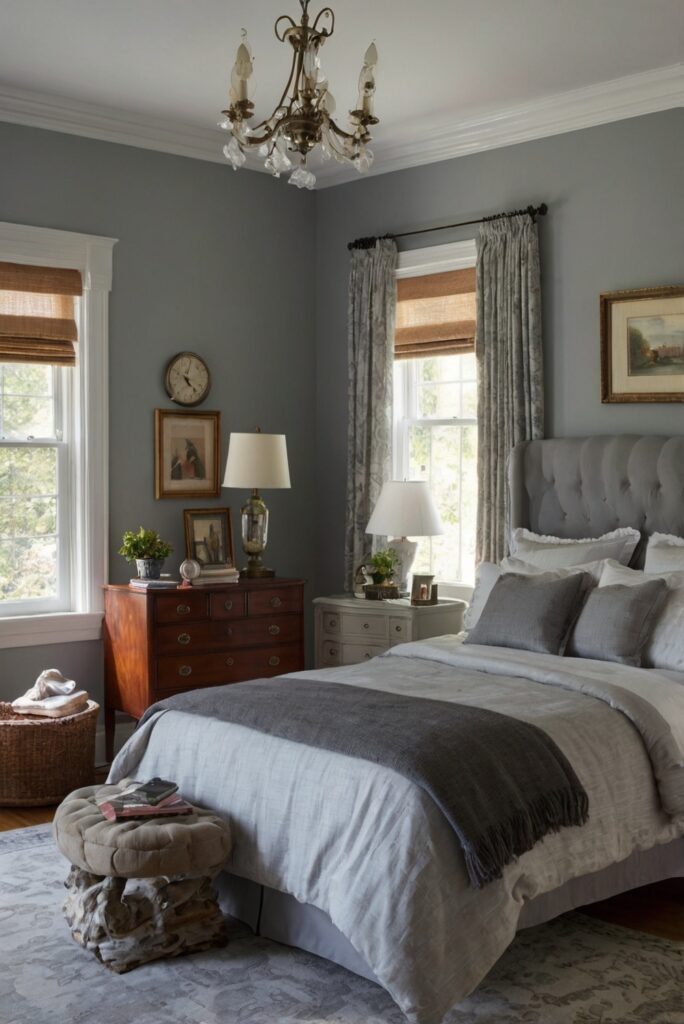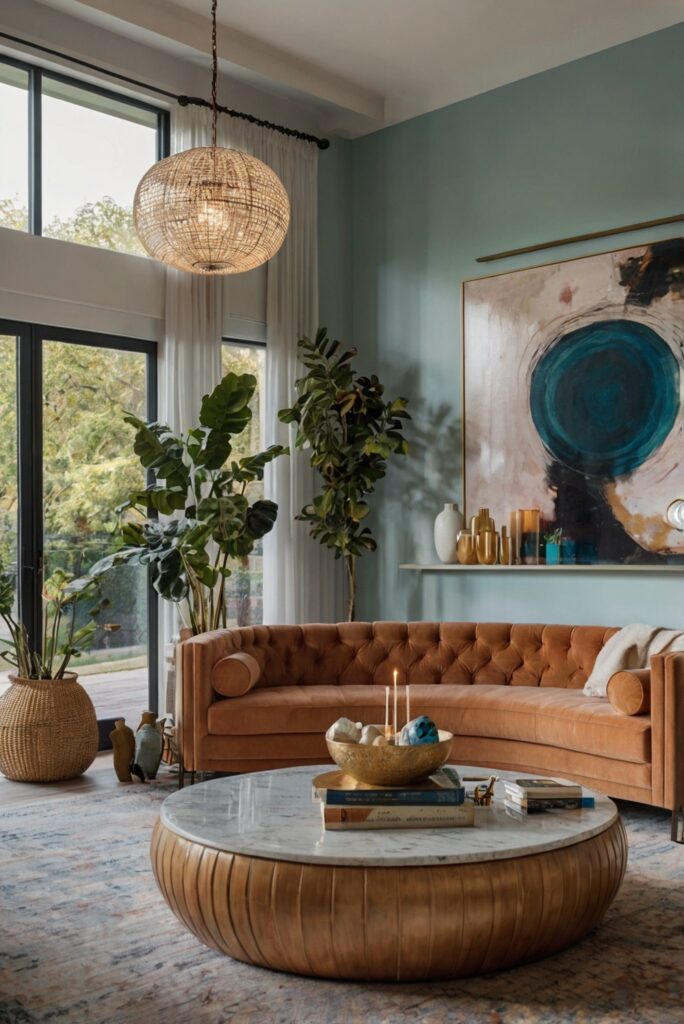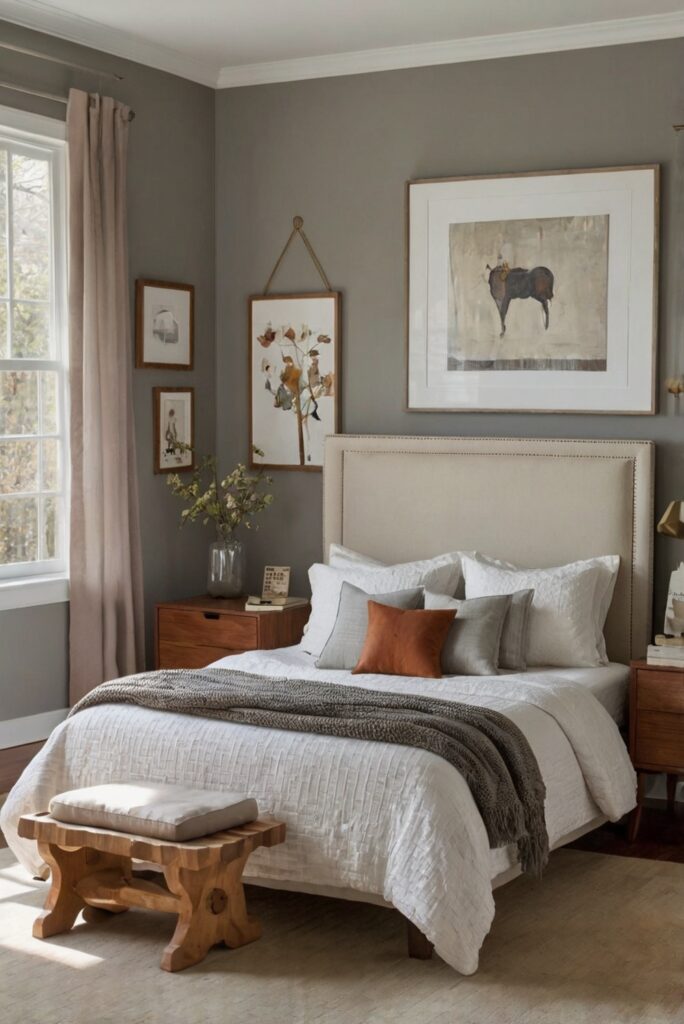Are you looking to update your bedroom decor? Explore the stylish world of two-tone paint schemes with our daily interior designer routine, perfect for injecting new life into your space.
To incorporate two-tone paint schemes in your bedroom, start by selecting complementary colors that create a cohesive look. You can paint the lower half of the wall in one color and the upper half in another to add visual interest. Make sure to choose colors that match your overall home decor interior design style. Consider using painter’s tape to create clean lines between the two colors. Experiment with different color combinations to find the right balance for your space. This technique works well in bedrooms where you want to create a focal point or add a touch of sophistication to the room.
By following these home decorating tips for incorporating two-tone paint schemes, you can transform your bedroom into a stylish and inviting space.
Choosing the Right Colors:
When incorporating a two-tone paint scheme in your bedroom, the first step is to choose the right colors. Select colors that complement each other and create a cohesive look. Consider the mood you want to achieve in your bedroom – warm and cozy, cool and calming, or vibrant and energetic. Bold and impactful colors can make a statement, while softer hues can create a serene atmosphere. Take into account the existing decor and furniture in your bedroom to ensure the colors harmonize well.
Creating Balance:
Balance is key when using a two-tone paint scheme in your bedroom. You can achieve this by painting one wall in a darker shade and the remaining walls in a lighter hue. This creates contrast and visual interest without overwhelming the space. Another option is to use the 60-30-10 rule where 60% of the room is one color, 30% is another color, and 10% is an accent color. This helps to maintain harmony and prevent the room from feeling disjointed.
Accentuating Architectural Features:
Highlighting architectural features such as moldings, trim, or alcoves with a different paint color can add depth and character to your bedroom. Painting these details in a contrasting color can draw attention to them and elevate the overall design of the room. Consider using a darker shade for these architectural elements to make them stand out against the lighter walls. This technique can enhance the architectural beauty of your bedroom and create a sophisticated look.
Furniture and Accessories:
When incorporating a two-tone paint scheme in your bedroom, it’s essential to coordinate your furniture and accessories with the chosen colors. Ensure that the colors of your bed frame, nightstands, dresser, and other furniture pieces complement the paint scheme. You can also add decorative pillows, throws, rugs, and artwork in coordinating colors to tie the room together. By integrating the colors of your furniture and accessories with the paint scheme, you can create a cohesive and visually appealing bedroom design.
Lighting Considerations:
Lighting plays a crucial role in how colors appear in a room. When using a two-tone paint scheme in your bedroom, consider the natural and artificial lighting sources. Darker colors absorb light and can make a room feel smaller, while lighter colors reflect light and can make a room appear more spacious. Position your light fixtures strategically to enhance the colors in your bedroom. Additionally, choose light bulbs with the right color temperature to ensure that the paint colors look their best under different lighting conditions.
1. What are two-tone paint schemes and how can they be incorporated into a bedroom?
Two-tone paint schemes involve using two different colors in a room to create a visually appealing and dynamic look. In a bedroom, this can be achieved by painting two walls in different colors or using one color on the walls and a contrasting color on the ceiling. This technique can help to add depth and interest to the space while also allowing you to play with different color combinations to create a unique and personalized look.
2. What are some popular color combinations for two-tone paint schemes in bedrooms?
Some popular color combinations for two-tone paint schemes in bedrooms include navy blue and white, grey and blush pink, black and gold, teal and grey, and mint green and coral. These combinations can help to create a harmonious and balanced look in the bedroom while also adding a pop of color and personality to the space.
3. How can you choose the right colors for a two-tone paint scheme in your bedroom?
When choosing colors for a two-tone paint scheme in your bedroom, it’s important to consider the overall style and decor of the room. Think about the mood you want to create – for example, calming and relaxing or bold and dramatic – and choose colors that reflect that. You can also use color theory principles to help you select complementary or contrasting colors that work well together.
4. What are some tips for successfully incorporating two-tone paint schemes in a bedroom?
To successfully incorporate two-tone paint schemes in your bedroom, consider painting the walls and ceiling different colors to create a cohesive look. You can also use paint to highlight architectural features, such as molding or trim, or create a focal point in the room. Experiment with different color combinations and consider using paint samples to test out your choices before committing to a final look.
5. Are there any trends or design ideas for incorporating two-tone paint schemes in bedrooms?
Some current trends for incorporating two-tone paint schemes in bedrooms include using bold colors, such as deep blues or rich greens, to create a statement wall or ceiling. You can also experiment with geometric patterns or stencils to add interest and texture to the space. Don’t be afraid to mix and match colors to create a unique and personalized look that reflects your style and personality.



